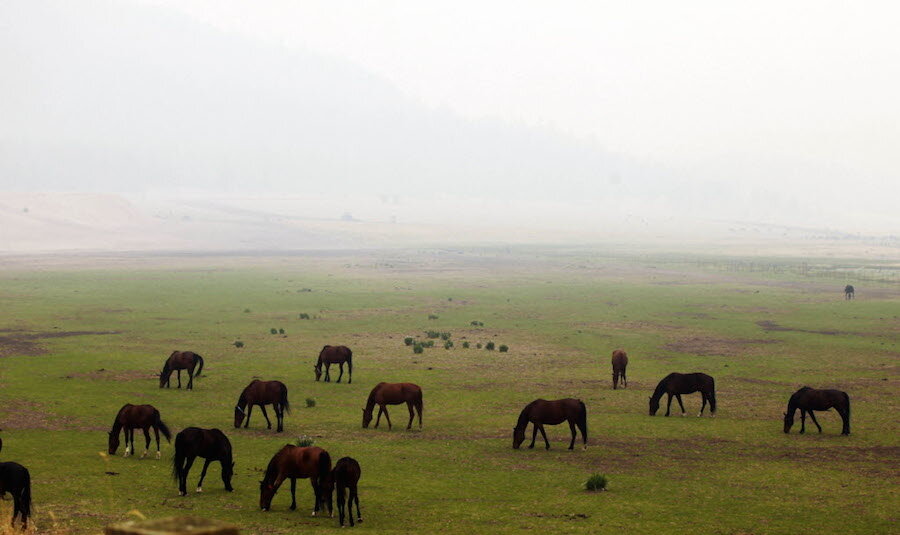Activists outraged at Forest Service's plan to round up Arizona wild horses
Loading...
The fate of free horses in Arizona has stirred up conservationists after the US Forest Service announced a plan to round up herds of horses in Central Arizona. The federal agency issued a notice late last week, giving owners an August 7 deadline to claim horses roaming around Tonto National Forest.
“All impounded animals not redeemed within 5 days after notice of sale of impounded livestock has been published in a local newspaper, posted in the county court house and in one or more local post offices, will be offered for sale at public auction,” the statement reads. “Livestock not sold at public sale may be sold at private sale or condemned and destroyed, or otherwise disposed of.”
The Forest Service’s terms outraged conservationists who claim the plan would put the horses’ lives in jeopardy, reports KPNX-TV.
"They're going to kill them, that's what disposed of means," said Simone Netherlands, president of The Salt River Wild Horse Management Group, a non-profit organization that has tracked and researched the herd of horses for years.
But the federal government's message is not quite that clear. On Monday, a Tonto National Forest representative said the federal agency has no intentions to begin a roundup on August 7 and will have up to a year to finalize plans.
The plan to remove the animals is a public safety measure, says the Tonto Forest Service. It claims horses have been causing highway accidents and wandering into popular recreation areas where they could potentially hurt visitors, Fox News reports. But there have been no reports of injuries so far.
One representative told KPNX-TV that nobody at the Forest Service wants the horses be put in a situation where they could be killed. But opponents fear that the plan may lead to just that.
The Salt River Wild Horse Management Group wrote that rounding up the herd in helicopters could prove fatal for newborn foals and older horses, while horses sent to auctions may be killed by so-called “kill buyers” who purchase the animals for the horse-meat trade. The activists submitted a 50-page proposal to the Forest Service outlining ways the horses can be moved humanely, but claim the agency has so far neglected their suggestions.
"There have been no safety issues with these horses," Ms. Netherlands told The Arizona Republic. “We used to have a half a million wild horses in Arizona only a hundred years ago and now there is a handful. The attitude is that wild horses are a pest. But that isn't true anymore. There just aren't that many of them.”
Carrie Templin, a public affairs officer with the Tonto National Forest, says the agency estimates about 100 horses have been running free. They mainly roam around land owned by a couple of native communities and the Tonto National Forest about 75 miles northeast of Phoenix. Yet it isn’t exactly clear where they came from.
The Salt River Wild Horse Management Group says they could be descendants of the first horses brought to the territory by Spanish missionaries, while the US Forest Service claims they simply wandered into forest service land after having been lost or abandoned on private property or reservations, the Arizona Republic reports.
Yet the activist group claims the Forest Service has given itself a loophole and violated federal law by refusing to assign a Wild Horse Territory in areas that have historically been heavily populated with herds. But labeling issues complicate the situation further.
Not only do the horses lack a designated territory, the Forest Service says they also don’t fit the standards to be considered wild horses, reports KPNX-TV. Instead, they’re treated as strays or “unauthorized livestock,” which means the Forest Service has no legal authority to manage them or hand them over to someone else. "All we can do is find the owners," said Ms. Templin.
Still, the opponents aren’t convinced. Netherlands claims the “unauthorized livestock” classification allows the government to avoid a 60-day public consultation period. The Salt River Wild Horse Management Group plans to hold a demonstration rejecting the horses’ displacement on Friday, and has set up an online petition against the plan that has garnered nearly 70,000 supporters at press time.







